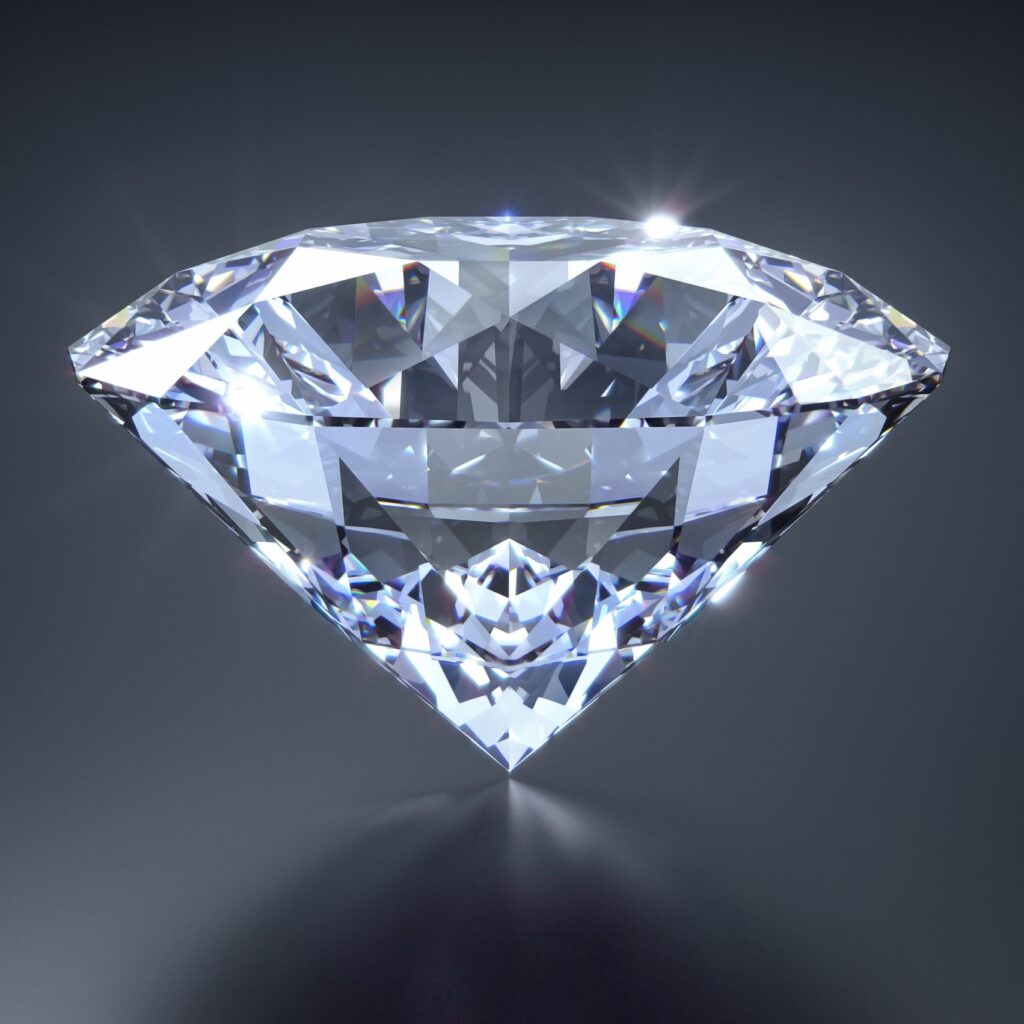About Moissanite: Information
Moissanite is a fascinating gemstone renowned for its brilliance, durability, and affordability. It is composed of silicon carbide and was first discovered in 1893 by French chemist Henri Moissan in a meteorite crater in Arizona. Initially mistaken for diamonds due to its similar appearance, moissanite has since become a popular alternative to diamonds in jewelry, prized for its remarkable optical properties and eco-friendly characteristics.
Physical Properties:
Moissanite possesses several unique physical properties that distinguish it from other gemstones:
Brilliance and Fire: Moissanite exhibits exceptional brilliance and fire, surpassing that of many other gemstones, including diamonds. Its high refractive index and dispersion give it a fiery sparkle that rivals even the most finely cut diamonds.
Hardness: Moissanite ranks 9.25 on the Mohs scale of hardness, making it one of the hardest known substances. This exceptional hardness ensures that moissanite is highly resistant to scratching and abrasion, making it suitable for everyday wear in jewelry.
Color and Clarity: Moissanite is typically near-colorless, with some stones displaying slight undertones of yellow or green. It is also known for its exceptional clarity, with most stones being eye-clean and free from visible inclusions.
Eco-Friendly: Unlike diamonds, which are often mined under environmentally damaging conditions, moissanite is created in laboratories using sustainable processes. This makes moissanite a more eco-friendly alternative to natural diamonds, reducing the environmental impact associated with gemstone mining.
Benefits of Moissanite:
Moissanite offers several advantages over other gemstones, particularly diamonds:
Affordability: One of the most significant benefits of moissanite is its affordability compared to diamonds. Moissanite typically costs significantly less than diamonds of comparable size and quality, making it an attractive option for budget-conscious consumers.
Brilliance and Sparkle: Moissanite’s exceptional brilliance and fire make it a stunning choice for jewelry. Its fiery sparkle rivals that of diamonds, creating a dazzling and eye-catching appearance that is sure to turn heads.
Durability: With its exceptional hardness and resistance to scratching, moissanite is highly durable and well-suited for everyday wear in jewelry. Unlike softer gemstones, moissanite retains its brilliance and beauty even after years of use.
Conflict-Free: Since moissanite is created in laboratories rather than mined from the earth, it is considered a conflict-free gemstone. This means that moissanite production does not contribute to human rights abuses or environmental degradation associated with traditional diamond mining.
Versatility: Moissanite’s versatility makes it suitable for a wide range of jewelry styles and settings. Whether used as a center stone in an engagement ring, a sparkling accent in earrings, or a dazzling pendant, moissanite adds elegance and sophistication to any piece of jewelry.
Hypoallergenic: Moissanite is hypoallergenic, making it an excellent choice for individuals with sensitive skin or allergies to certain metals. Unlike some other gemstones, moissanite does not contain any known allergens and is safe for prolonged wear.
Conclusion:
Moissanite is a captivating gemstone prized for its brilliance, durability, and affordability. With its exceptional optical properties and eco-friendly characteristics, moissanite offers a stunning alternative to traditional diamonds in jewelry. Whether you’re seeking a sparkling engagement ring, a dazzling pair of earrings, or a glamorous pendant, moissanite provides a dazzling and ethical choice that is sure to be cherished for years to come.





